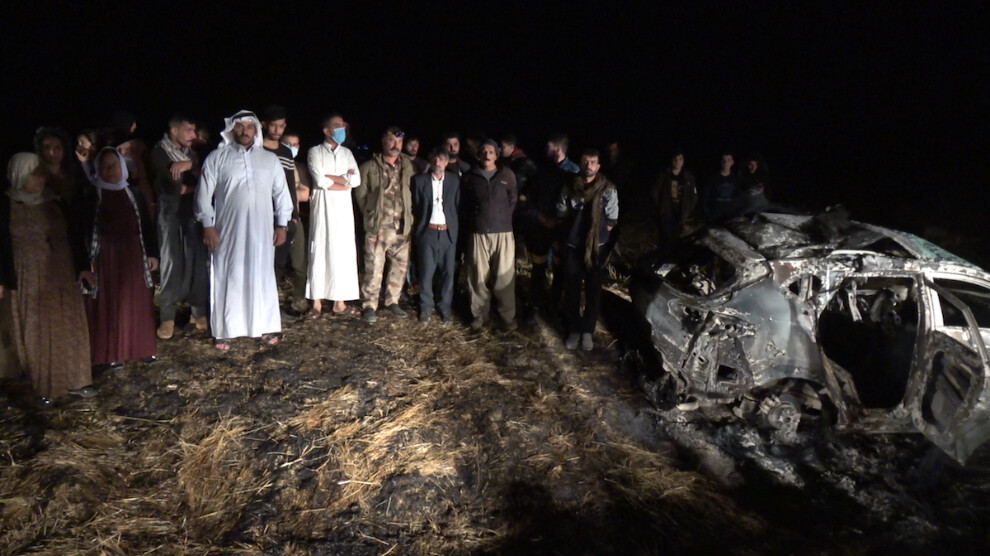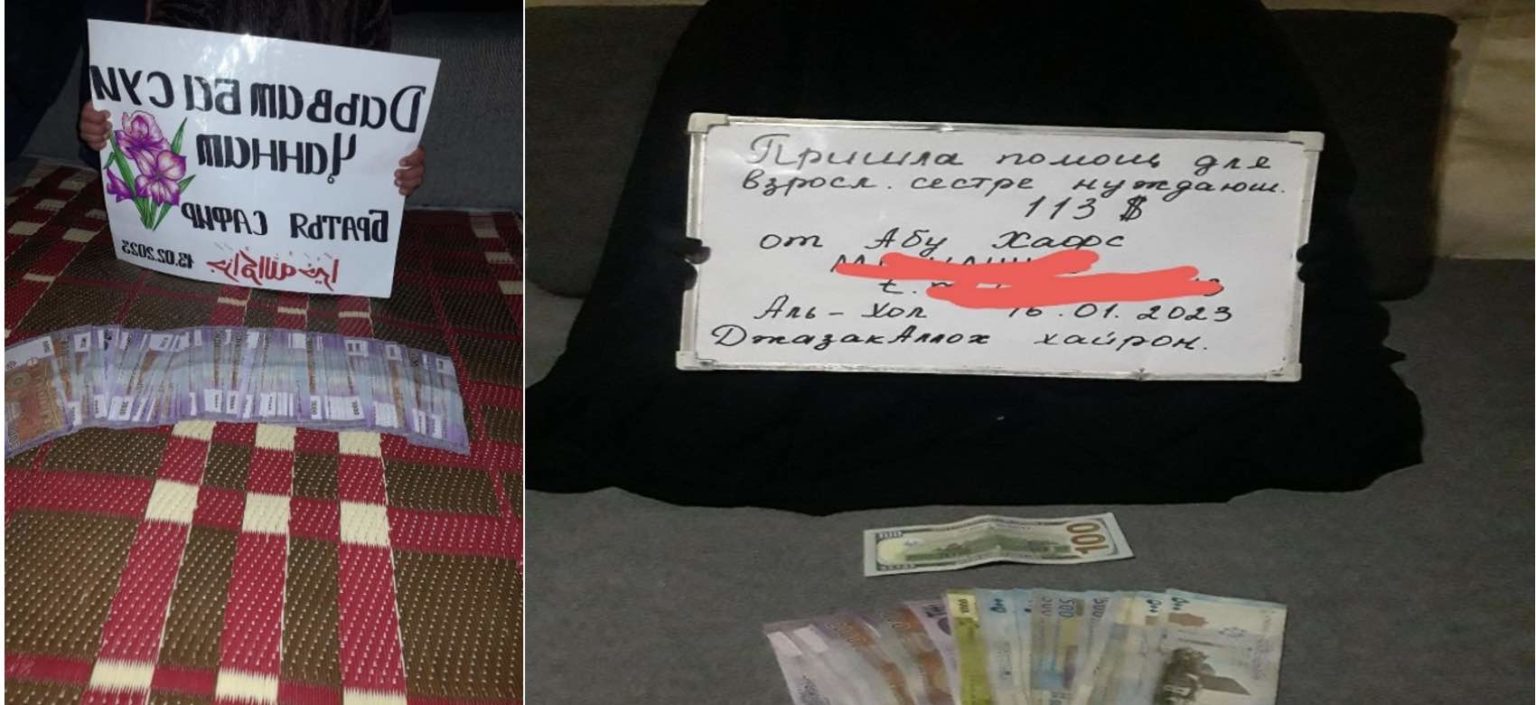Mona Thakkar and Anne Speckhard As published in Homeland Security Today The February 2023 UN…

Five Years of Airstrikes: Turkish Aggression and International Silence in Sinjar, 2017-2021
– includes an Original Dataset
- Amy Austin Holmes, Diween Hawezy & Brett Cohen
In December 2018, the same year genocide survivor Nadia Murad won the Nobel Peace Prize, she met with Turkish Foreign Minister Mevlut Çavuşoğlu to discuss the Turkish airstrikes that targeted her hometown of Sinjar, Iraq. She tweeted out a photo of their meeting, saying: “Turkey and Iraq must work together to find a solution to prevent any further bombings in Sinjar. We want to rebuild what ISIS destroyed and help Yazidis return home.”
But her call to action was ignored.
Turkish Aggression in Sinjar
Turkey has carried out airstrikes in Sinjar, the ancestral homeland of the Yezidis, every single year for the past five years, from 2017 until 2021. Despite this, there appears to be no serious international monitoring focused on the Turkish operations in Sinjar and how they impact Yezidis recovering from genocide.
The Turkish airstrikes contribute to instability and prolong the underdevelopment of Sinjar. Located in the Nineveh Governorate, Sinjar is a historically disputed territory claimed both by Baghdad and Erbil, and was impoverished even before it was assaulted by Islamic State militants. Alongside other security threats and the lack of basic services, Turkish drone and airstrikes also appear to be one of several reasons why Yezidis are reluctant to return to their homes in Sinjar. In the month of July alone, 472 Yezidis who had tried to return to Sinjar and rebuild their lives ended up relocating back to IDP camps in Duhok, according to the Kurdistan Region’s Joint Crisis Coordination Centre. The lack of security, basic services, and jobs were all cited as reasons for returning to live in the camps. By one estimate, some 350,000 Yezidis are still living in IDP camps and unable to return to Sinjar.
A statement entitled “Do Not Allow Turkey to Destroy the Yezidis of Sinjar” was issued on February 27, 2021, by the general command of the Yekîneyên Berxwedana Şingal (YBS) and Êzîdxan Women’s Units (YJE). The statement details the historical devastation of the Yezidi community in Turkey and ongoing persecution in Turkish-occupied Syria, highlighting the importance of Sinjar as one of the last remaining sanctuaries for Yezidis in the Middle East.
Established in the aftermath of the genocide in 2014, the male Sinjar Defense Units (YBS) and Yezidi Women’s Units (YJE) are local defense forces that include many Yezidis native to Sinjar. In August 2014, Syrian Kurds in the YPG (People’s Protection Units), and about a dozen PKK (Kurdistan Workers Party) cadres led the initial rescue efforts in Sinjar, opening a corridor that allowed many Yezidis entrapped on the mountaintop to escape to safety. According to a Yezidi survivor interviewed in 2014: “If it weren’t for the Kurdish fighters, we would have died up there.” Afterwards the PKK, a group designated by Turkey, the EU and the US as a terrorist organization, began training local Yezidis to defend themselves and their region in the vacuum created after the withdrawal of other security forces.
From its vantage point, Ankara sees the YBS/YJE as no different than the PKK, which has fought an insurgency against Turkey for decades, although the YBS was formed to defend Yezidis in Iraq from a genocide. Despite initially being trained by the PKK, the YBS has reportedly for several years received their salaries from the central government in Baghdad. Furthermore, the YBS-YJE joint statement emphasizes that they are a “force affiliated with the Iraqi government” in cooperation with the Mosul Operations Command. The Iraqi Army’s 20th Division also operates in Sinjar. On the 13th of December 2020, Iraq’s Minister of Interior had suggested to the YBS the option of being put under the command of Iraq’s National Security or the Hashd al-Sha’bi [PMF] as part of the Sinjar agreement. The YBS reportedly joined the PMF as Regiment 80 and was most recently referred to as the Third Division. In addition to the Yazidi groups there are reportedly some 2000 Iraqi soldiers of the federal army, 400 federal police and over 10,000 Shia PMF from the Badr militia, Nujaba, Asaib Ahl al-Hak, Said al-Shuhada brigades and Hizbollah brigades based in the Sinjar region. A recent map of the approximate location of these forces in Sinjar can be found here, although locals in Sinjar have not been able to confirm precise locations of all of the various forces.
Methodology
In order to create a comprehensive database on Turkish military operations in Sinjar, we compiled information from five different sources: the Armed Conflict Location and Event Data Project (ACLED), Janes Intelligence Review, Airwars, locals in Sinjar, and Twitter. By datamining Twitter reports of strikes on Sinjar using key words in both English and Turkish, a dataset was constructed of airstrikes that could be corroborated with information from ACLED, Airwars, and Janes, as well as multiple news reports by journalists. This offered an approximation of the days on which Turkish strikes on Sinjar took place, all of which were found to occur after 2016. The dataset is currently limited to Sinjar, and does not include Turkish operations elsewhere in Iraq or the Kurdistan Region.
As the data shows, Turkey conducted airstrikes or drone surveillance on at least 24 days between 2017-2021. Three of the 24 days involved some form of drone activity without any reported strikes. The total number of airstrikes is unknown, but in some cases Turkish officials claim to have hit more than 81 targets on a single day. Turkey claims that it is routing out PKK terrorists and destroying their camps and ability to mount attacks from Iraq back into Turkey, although Sinjar is located more than 150km to the south of the Turkish border.
Some, including the Yezidis of Sinjar, dispute the claim that Turkey is justified in its airstrikes as a counter terrorism operation. At least 33 individuals have been killed as a result of these Turkish airstrikes, including civilians, Kurdish Peshmerga, Iraqi security forces, and Yezidis in the YBS-YJE. According to data from Airwars, 13 civilians have been killed in Sinjar alone as a result of the Turkish operations.
Turkish Airstrikes, Drone Strikes, and Surveillance in Sinjar 2017-2021

Five Years of Airstrikes
The United States responded to the genocide in August 2014 by summoning international partners in the Global Coalition to Defeat ISIS including the U.S. backed Syrian Democratic Forces (SDF), whose rank-and-file are now majority Arab, and who Turkey also labels as PKK and terrorists. By December of 2015, Islamic State militants were completely driven out of Sinjar.
Based on the open-source data, the first Turkish airstrikes that targeted Sinjar were in April 2017 – long after ISIS militants had been cleared from the area. The April 2017 airstrikes were part of a larger Turkish operation in both Iraq and Syria and were condemned by Washington, Erbil, Baghdad, and many Yezidi advocates. The Coalition Spokesperson stated that the “airstrikes were not approved by the Counter ISIS Coalition.” The Spokesperson for the U.S. State Department said that they were “deeply concerned,” while a defense official said they had only been given one hour’s advance notice before the launching of the Turkish strikes. The Iraqi cabinet called them a “serious violation of Iraq’s sovereignty.” The Kurdistan Regional Government also criticized the operations which killed five Peshmerga fighters. Turkish President Erdogan later clarified that the airstrikes “were absolutely not an operation against the Peshmerga,” yet vowed to continue fighting the PKK.
It is unclear why the Turkish airstrikes on Sinjar began in April 2017. The Global Coalition, of which Turkey is a member, was still very focused on fighting ISIS, which still controlled territory in both Iraq and Syria. The year 2017 also happens to be when Turkey’s interventionist activities surpassed those of Iran, according to a new report by the Quincy Institute comparing six Middle Eastern powers over the past decade, suggesting that the airstrikes in Sinjar were part of Turkey’s expanding regional ambitions.
Despite being roundly condemned, the Turkish airstrikes in Sinjar continued – and even increased. Over the five-year period, the year 2020 witnessed the highest number of Turkish airstrikes in Sinjar. After another round of airstrikes in June 2020, it was reported that US-made F-16s and Turkish-made Bayraktar drones had been used. Gayle Manchin, chair of the bipartisan United States Commission on International Religious Freedom (USCIRF) at the time, said the strikes were “threatening to hundreds of already traumatized Yazidi families attempting to return to Sinjar.”
Turkish airstrikes have targeted multiple different locations on Mount Sinjar, as well as areas to the north and south. ACLED data listed all airstrikes around Mt Sinjar as located in Sinjar town itself where accurate location data was not available. Where alternate data sources could not provide more accurate locations, ACLED coordinates were used. The vast majority of strikes however targeted regions around Mount Sinjar, where many Yezidis live. The most recent airstrike in Sinjar occurred on June 30th of this year, hitting a YBS vehicle near the Serdest camp, according to the event description from ACLED.
Yezidis’ Pleas for Help Go Unanswered
In addition to Nobel Laureate Nadia Murad, other prominent Yezidi advocates, including Pari Ibrahim and Murad Ismael, have also called on the international community for assistance. In a written statement on July 30, Pari Ibrahim, the Director of the Free Yezidi Foundation, said: “Many Yezidis in the IDP camps mention that the air strikes are one reason they fear returning […] Turkey had no interest in bombing Sinjar when it was held by ISIS. The Global Coalition should put an immediate end to these attacks. They are destabilizing and dangerous.”
Murad Ismael worked tirelessly for years as the Co-Founder and Former Director of YAZDA, a global advocacy organization dedicated to protecting Yezidis. He now dreams of building the first institution of higher education in Sinjar. For now, courses at the Sinjar Academy will be offered online, but he hopes to build a brick-and-mortar campus in the Sinjar region within the next five years. Mr. Ismael did not mince words in expressing his frustration, saying: “We have repeatedly asked the international community to pressure Turkey to stop these strikes, which unfortunately did not stop.”
Their appeal for help is understandable, especially given that “the preservation of Iraq’s rich historical pluralism” and the reintegration of “persecuted ethnic and religious minority communities” remains a high priority across U.S. government agencies.
Will the Sinjar Agreement end the Turkish Airstrikes?
Some observers hope that the October 2020 Sinjar Agreement signed between Erbil and Baghdad will finally set the stage for a resolution to the disputed territory, although Yezidi leaders were notably absent from the negotiations. According to the agreement, signed under the auspices of the United Nations Assistance Mission for Iraq (UNAMI), all armed groups should withdraw from Sinjar. They are to be replaced by some 2,500 “local” security forces. However, many of the women and men in the YBS are precisely that: local Yezidis from Sinjar – the very people who survived the genocide in 2014 and have organized themselves to protect their areas from further genocidal attacks.
On the Need for International Monitoring in Sinjar
In spite of the Sinjar Agreement in October 2020, Turkish airstrikes, drone strikes, and drone surveillance have continued to target the region of Sinjar in 2021. After airstrikes in Sinjar and the nearby Makhmour refugee camp in June, U.S. Ambassador to the UN Linda Thomas-Greenfield expressed concern and stated that “any attack targeting civilians at Makhmour refugee camp would be a violation of international and humanitarian law.” Unlike violations committed by Turkish-backed proxy forces such as Ahrar al-Sharqiyah in Syria, which was sanctioned by the U.S. Treasury on Wednesday, airstrikes conducted by the Turkish military itself can be directly traced back to Ankara.
Without proper agreement on what qualifies as a PKK-linked group, however, Turkey will likely continue to target civilians and YBS-YJE forces in Sinjar in a similar manner. In order to reduce violence and ensure the opportunity for peaceful development in Sinjar, international monitoring of and coordination regarding Turkish operations in Iraq must be enhanced.
In line with the Elie Wiesel Genocide and Atrocities Prevention Act and the Global Fragility Act, the Biden Administration has an opportunity to lead the international community in genocide recovery and should prioritize the protection of civilians in Iraq and Syria. Seven years after a devastating genocide, Yezidis deserve the chance to rebuild without the fear of death from above.
Author Bios
Amy Austin Holmes has a PhD from Johns Hopkins University and is the author of two books and more than 50 articles. She is currently a Public Policy Fellow at the Woodrow Wilson International Center for Scholars and a Research Fellow at ICSVE.
Diween Hawezy is a Data Scientist with a PhD in Engineering. He contributes data visualization and analysis to conflict studies in the Middle East.
Brett Cohen is a student at New York University who specializes in foreign policy and the Middle East.
Appendix
Original Dataset on Turkish Airstrikes in Sinjar between 2017-2021
Compiled from ACLED, Airwars, Janes, Twitter, and Media Reports
Data: https://1drv.ms/u/s!AsHDhlBeESPvgbFDSWHB2pQf-JYC7Q?e=j4LrnK



